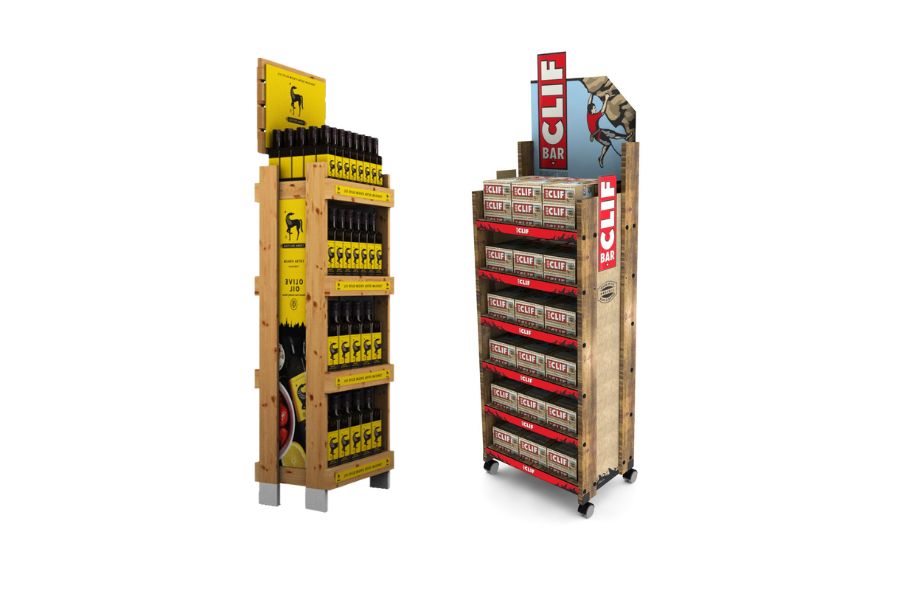Hardwoods and Melamine Displays
August 2023
Harnessing Hardwoods and Melamine: Revolutionizing Custom Product Displays

Introduction
Gone are the days when display aesthetics were mere afterthoughts in point of purchase and retail design strategies. Today, they are a cornerstone of effective marketing and sales generation tactics. One of the key elements in creating appealing and durable displays is the choice of materials. Amongst the myriad options, hardwood and melamine standout as superior choices due to their aesthetics, durability, and versatility. Let's delve into these two materials and explore their potential applications and advantages in point of purchase and retail displays.
Understanding Hardwoods and Melamine
Before we delve into the benefits provided by these materials, we need to understand their essence.
Hardwood is a broad term encompassing a range of woods obtained from dicot trees, known for being more robust and denser than softwood. They have a vast spectrum of colors, patterns, and textures, making them an appealing choice for aesthetic purposes. Among the most commonly used are oak, maple, and walnut.
Melamine, on the other hand, is a plastic overlay applied to a substrate (generally MDF or particleboard) under high heat and pressure. The result is a surface which is resilient, easy to clean, and comes in various colors, patterns, and finishes.
Hardwoods in Display Designs
The use of hardwood in product displays extends an element of sophistication and elegance to product presentation. Its natural color and grain variations make it an articulate choice for creating striking display designs. This rich and textured look can elevate premium products and enhance a store's overall ambiance.
Besides the aesthetic aspect, hardwood exhibits impressive durability. It's highly resistant to wear and tear, making it perfect for high-traffic stores where durability is a key requirement. Moreover, hardwood displays are easy to refurbish and maintain, further prolonging their lifespan.
Melamine in Display Designs
Melamine's primary advantage lies in its versatility. Given the wide range of colors, patterns, and finishes it comes in, melamine can easily complement a store's color scheme or mimic other materials like wood or metal. This ability to blend in aligns perfectly with modern minimalist aesthetics prevalent in many retail spaces today.
Additionally, melamine displays are highly robust. Unlike ordinary wood, melamine resists moisture, heat, and stains, making it particularly apt for food stores or any retail setting where hygiene is paramount. The easy-to-clean surface means that displays always stay spotless, maintaining a professional look.
Comparing Hardwoods and Melamine
While hardwood offers a rich, natural look and feel that exudes luxury, melamine promises flexibility with its plethora of designs and resilience against environmental factors. The choice between the two is largely determined by the nature of the products to be displayed, store aesthetics, and budget constraints. However, their respective merits make both materials excellent choices for a variety of retail displays.
Conclusion
Bull Display's design and manufacturing capabilities extend to harnessing the impressive qualities of hardwood and melamine to create custom point of purchase and retail displays. By leveraging the aesthetics, durability, and versatility provided by these materials, businesses can enhance their sales numbers, improve store ambiance and ensure longevity of their displays. Whether it's the natural allure of hardwoods or the adaptable appeal of melamine - with conscious design strategies, both can be instrumental in creating effective and striking product displays.